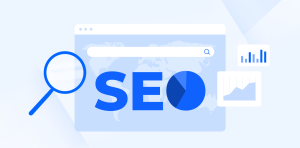A Beginner’s Guide to Website Speed Optimization

What is website speed?
This may be considered the time it takes your computer or phone browser to download web pages and content such as images and other files from the servers that host a specific website. It is that length of time between clicking a link and displaying of the contents from the page.
Speed has been considered an important part of website development, and it now affects search engine ranking for every site, alongside other factors such as user experience, responsiveness of the site and other performance metrics. It is an important part of website design and development strategy.
What is the best website speed?
Over time, the speed of websites has increased. Users are accustomed to fast load speeds. It has shaped user satisfaction, and has been developed into a central index for website performance evaluation.
Google research engineers have determined that any length of time slower than 400 milliseconds, which is considered the length of time taken during the blink of an eye, could significantly affect customer satisfaction. People are less likely to continue exploring a website if its pages take longer than this amount of time to load.
Changes in networking and communication technology have vastly improved the digital age. Unlike the slow loading that was characteristic of the early age of the internet, modern websites rely on speed for a competitive advantage
How to improve speed
When developing your Word Press site, you will need to consider different performance metrics, as well as work out how to improve user experience. You can achieve these by improving your website speed. You should invest in the appropriate set of optimization solutions to help improve the appearance and performance of your website. In the long term, such moves will help to improve sales through the online platform, develop great customer experience and result in business success. These are a few practices you could take up.
Optimizing images
Images contribute up to two thirds of the total page size. In order to reduce your page load times, you should consider optimizing your images. These images, as well as other parts of your site that increase its total size outlay increase the time required for the page to load, with larger pages requiring more time. There are a number of manual image optimization measures that could help reduce the size. You should choose your format carefully, to maximize the site’s performance. Use JPGs for high quality images that need little modification. For icons, logos, signs, text and illustrations, you should consider using PNG images. GIFs are great alternatives to BMPs for smaller or simpler images. You may also consider using fewer images and relying more on content as opposed to a visual display to attract interest. If it is not possible to reduce the number of images, you may consider reducing their size by about 70% will help reduce the page load time without affecting the aesthetic balance.
You may also consider WP speed optimization solutions through a number of plugging available on Word Press. You can use plug-in such as Tinning, Smash, Short Pixel image Optimize, Imagery and Optimums Word Press Image Optimizer to automatically compress and optimize your site’s images.
Optimizing Code
You may also consider optimizing CSS code and its delivery through a number of ways that streamline the site and make the interface quick and easy to use. You need to reduce the size of your code by opting for shorthand code with fewer operators and declarations. Your Word Press site will require fewer cycles during processing, and will load quicker. You can also minify CSS to reduce the weight on the script files. By optimizing CSS code, your site will be lightweight and easy to process, which will help it load quicker. You may also position your code to avoid baggage when loading. By placing the CSS code and JavaScript separately, web browsers will not display CSS content after downloading, which will result in quicker load times. You should also remove all unnecessary CSS code and avoid using it in HTML.
For automated Word Press Optimization, you may consider using tools such as WP Rocket, W3 Total cache; Cache Enabler and Cloud flare CDN to help minify CSS and JavaScript code.
Using fewer plugins
Even though plugging offer a range of functions that may help the appearance and suitability of your Word Press site, they could also affect performance. If your plugging of choice are light, well developed and designed to avoid heavy server processing, they will not significantly affect your site’s performance. However, only a few plugging check all these boxes. You should manage your plugins and remain with only those that are necessary and beneficial to your site, without affecting the overall performance.
When choosing plug-in for you Word Press site, here are a few points you should consider. If the plugging performs complex operations, or attempts to load a large number of scripts and content assets, it will slow down your website and should be avoided. If it pushes requests to externally hosted APIs and increases the total number of database searches on every page request, you may also need to disregard it.
There is no right number of plug-in for your site. However, you should consider the purpose and design of the specific plugging before installing it for your site. For instance, five simple plugins would work better for your Word Press site than one comprehensive plugging with all five features. Some comprehensive plug-in have been developed to provide a range if optimization services without being too demanding on your site, and may be considered exceptions to this rule, such as the All in One SEO pack.
Final thought
This guide should offer basic insight into WP speed optimization. It provides a breakdown of some of the basic optimization practices, which are aimed at improving your site’s performance through a reduction in page speed. The benefits of a fast load time are immense, and can be the difference between successful and unsuccessful online platforms.






